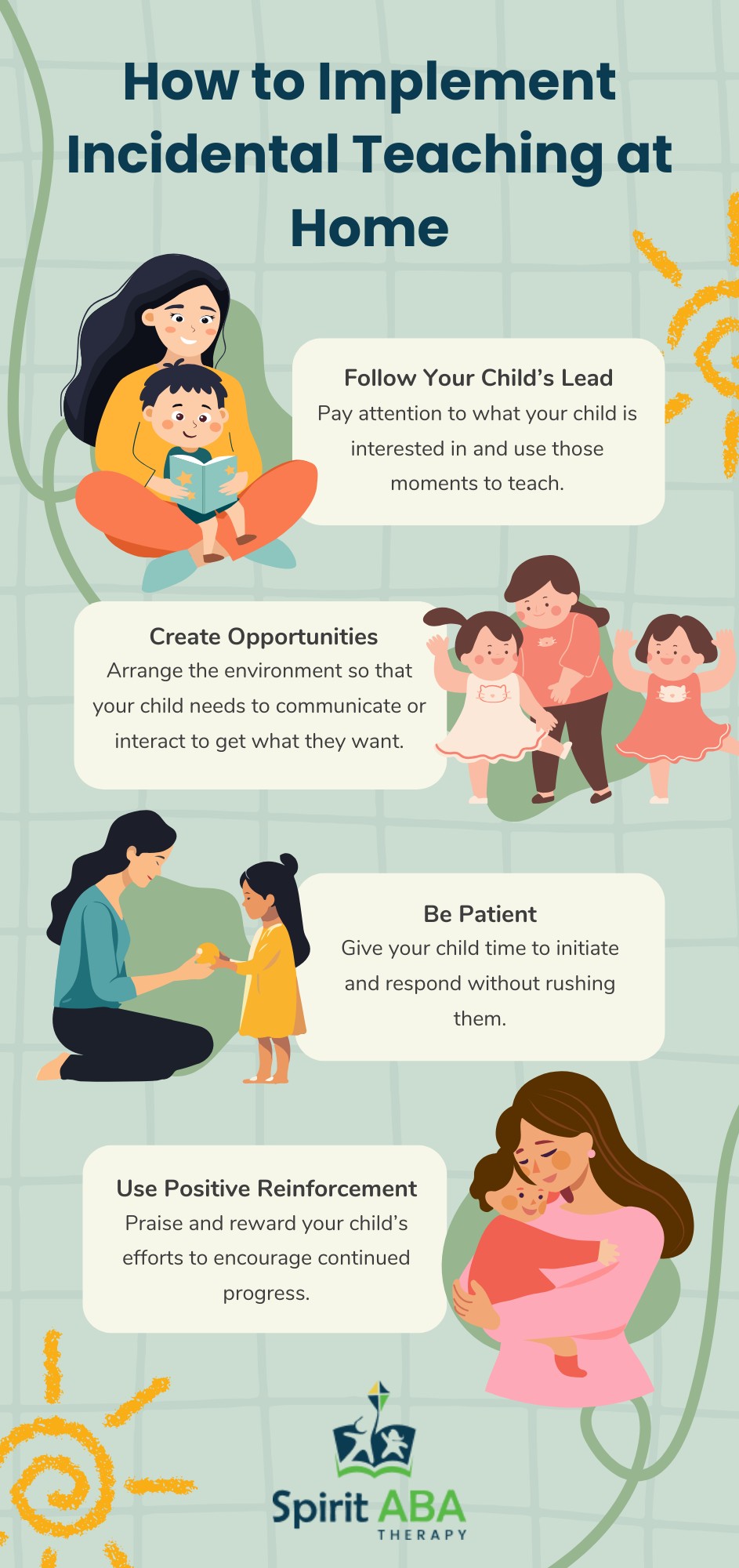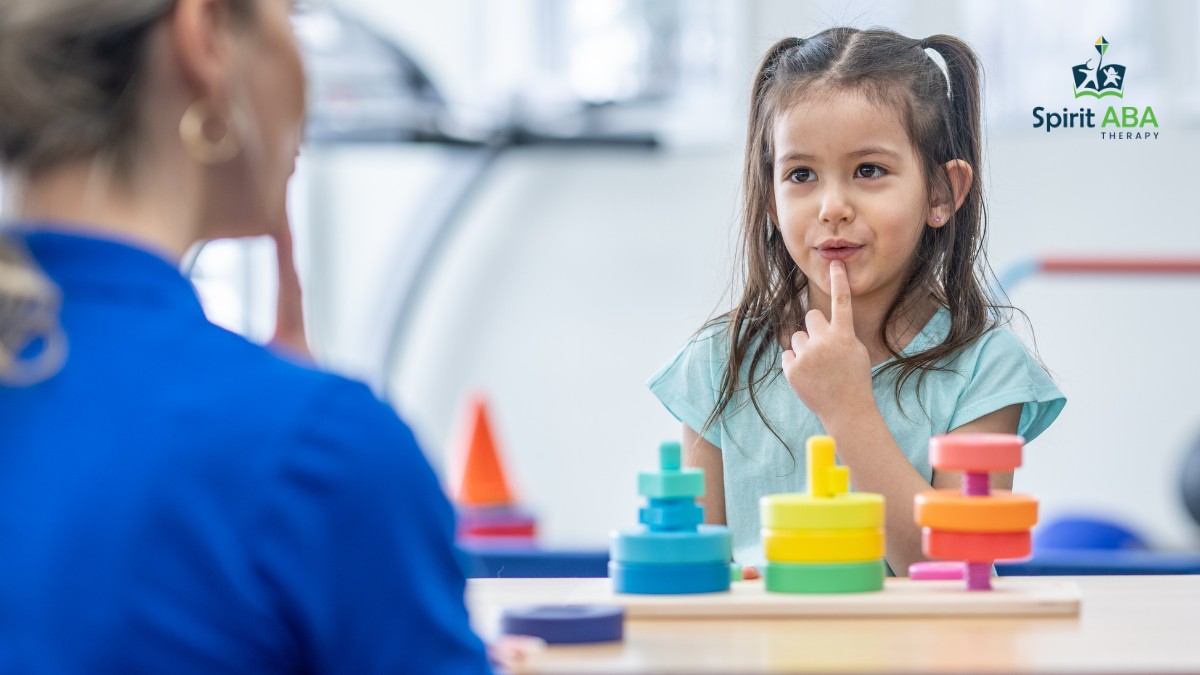Key Points:
- Incidental teaching is a naturalistic teaching strategy used in ABA therapy to promote learning through everyday interactions.
- It focuses on creating opportunities for learning within a child’s natural environment, making it less structured than traditional ABA methods.
- This approach encourages motivation, communication, and independence by following the child’s lead and interests.
- It is particularly effective for teaching language, social skills, and adaptive behaviors.
What is incidental teaching in ABA? Picture your child reaching for a toy, and that simple moment becoming a chance to learn. This flexible, engaging method in ABA therapy uses natural interactions to teach communication, social skills, and more. Ready to see how it can help your child thrive?
What Is Incidental Teaching in ABA Therapy?
Incidental teaching in ABA therapy is a strategy that uses naturally occurring opportunities to teach skills within a child’s everyday environment. Unlike more structured ABA techniques, incidental teaching is flexible and child-led. It capitalizes on moments when a child shows interest in an object, activity, or interaction, turning these moments into teachable opportunities.
For example, if a child reaches for a toy on a high shelf, the therapist or parent might pause and wait for the child to request the toy, either verbally or through gestures. This encourages the child to communicate and reinforces their efforts. The goal is to make learning feel natural and engaging, rather than forced or repetitive.
How Does Incidental Teaching Work?
Incidental teaching is rooted in the principles of ABA, which focus on understanding and modifying behavior through reinforcement and environmental adjustments. However, what sets incidental teaching apart is its emphasis on spontaneity and the child’s natural motivations. Here’s how it typically works:
- Identify the Child’s Interest: The therapist or parent observes the child to determine what they are naturally drawn to, such as a toy, game, or activity.
- Create an Opportunity: The desired item or activity is placed slightly out of reach or requires some form of interaction to access.
- Wait for Initiation: The adult waits for the child to initiate communication or interaction, such as making eye contact, pointing, or speaking.
- Prompt and Reinforce: If the child struggles, the adult provides a gentle prompt (e.g., “What do you want?”) and reinforces the child’s effort by giving them the item or allowing access to the activity.
Benefits of Incidental Teaching in ABA
Incidental teaching offers several advantages for children with autism and other developmental challenges. This process not only teaches specific skills but also encourages the child to take an active role in their learning. Here are some of the key benefits:
- Promotes Generalization: Because skills are taught in natural settings, children are more likely to apply them in real-life situations.
- Encourages Motivation: By following the child’s interests, incidental teaching keeps them engaged and motivated to learn.
- Builds Communication Skills: This method is particularly effective for teaching verbal and non-verbal communication.
- Fosters Independence: Children learn to initiate interactions and solve problems on their own.
When Is Incidental Teaching Used?
Incidental teaching is versatile and can be used to target a wide range of skills. Some common applications include:
- Language Development: Teaching children to request items, label objects, or engage in conversations.
- Social Skills: Encouraging turn-taking, sharing, and cooperative play.
- Adaptive Behaviors: Helping children learn self-care tasks like dressing, eating, and toileting.
This approach is especially useful for young children or those who struggle with more structured teaching methods.
How to Implement Incidental Teaching at Home
Parents and caregivers can easily incorporate incidental teaching into daily routines. Here are some practical tips:

For example, during mealtime, you might place your child’s favorite snack just out of reach and wait for them to ask for it. This simple act can turn into a powerful learning opportunity.
Incidental Teaching vs. Discrete Trial Training
While both incidental teaching and discrete trial training (DTT) are ABA techniques, they differ in their approach. DTT is highly structured and involves breaking down skills into small, teachable components. Incidental teaching, on the other hand, is more flexible and occurs in natural settings. Both methods have their place in ABA therapy, and many programs use a combination of the two to maximize learning outcomes.
Challenges of Incidental Teaching
While incidental teaching is highly effective, it does come with some challenges. For instance, it requires careful observation and quick thinking to capitalize on teachable moments. Additionally, some children may need more structured support before they can benefit from this approach. However, with practice and consistency, parents and therapists can overcome these challenges.

Why Choose ABA Therapy for Your Child?
ABA therapy, including techniques like incidental teaching, is a proven, research-backed approach to helping children with autism and other developmental challenges. Here’s why it’s a great choice:
- Personalized Learning: Tailored programs address your child’s unique needs and goals.
- Evidence-Based: Decades of research support its effectiveness in improving communication, social skills, and behavior.
- Naturalistic Methods: Approaches like incidental teaching make learning engaging and relevant to everyday life.
- Long-Term Growth: Focuses on building skills that promote independence and lifelong success.
Ready to Explore ABA Therapy for Your Child?
If you’re looking for a trusted provider of ABA therapy in Nebraska, Colorado, and Iowa, consider reaching out to Spirit ABA. Our team of experienced therapists specializes in creating personalized programs that incorporate naturalistic teaching methods like incidental teaching. We believe in empowering children to learn and grow in a supportive, engaging environment.
Contact Spirit ABA today to schedule a consultation and discover how we can help your child thrive.


